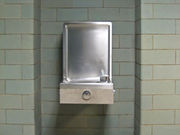THS exposure route ID’d from partitioning of surface volatile organic compounds into aerosol phase
THURSDAY, May 10, 2018 (HealthDay News) — Thirdhand smoke (THS), the chemical residue from cigarette smoke that attaches to anything and anyone in the vicinity of a smoke cloud, can still make its way into the air of buildings that currently have a non-smoking designation, according to a study published online May 9 in Science Advances.
Peter F. DeCarlo, Ph.D., from Drexel University in Philadelphia, and colleagues used mass spectrometry and factor analysis to examine the composition of aerosol in an indoor classroom and examine the uptake of THS to indoors.
The researchers identified a reduced nitrogen component in chemical speciation of the organic aerosol fraction, which was mainly found in the indoor environment and contributed 29 percent of the indoor submicrometer aerosol mass. This factor was identified as THS compounds partitioning from interior surfaces to gas and then aerosol phases. In order for THS vapors to partition to aerosols, an aqueous phase is required for reactive uptake of the reduced nitrogen species (RdNS), leading to seasonal differences in indoor THS concentration. Under the acidic conditions expected for indoor aerosols of outdoor origin, RdNS protonates. Using cigarette smoke deposited into a Pyrex vessel resulted in a similar partitioning behavior to aerosol of outdoor origin; after one week of residence time in the closed vessel, mass spectral features were comparable to the measured indoor THS factor.
“This study reports a new, potentially large THS exposure route from partitioning of surface volatile organic compounds into the aerosol phase and subsequent dispersion in a mechanically ventilated building,” the authors write.
Copyright © 2018 HealthDay. All rights reserved.








